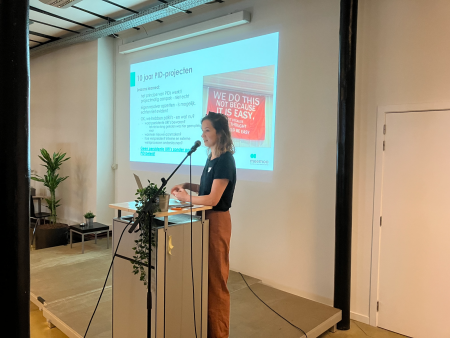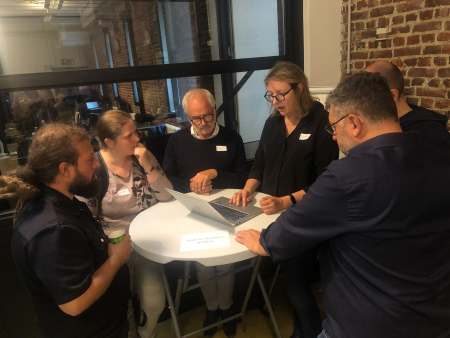Persistent Identification Study Day Report
- Record
After a decade of research and projects centred around persistent identification, we felt it was high time for a study day. Because what has happened in the field of persistent identification within the heritage sector since 2013? Where does the sector stand today and what are the challenges for the future? On 19 September, we met with numerous partners from archive institutions, libraries and museums to discuss this issue.
This year marks exactly 10 years since we, along with many partners from the cultural heritage sector, initiated a series of projects around the Persistent Identification of heritage objects (link in Dutch). Since then, the sector has been abuzz with Persistent Identifiers (PIDs) and persistent URIs (Uniform Resource Identifiers). And rightly so, because heritage institutions that are aiming to ensure their data is linked and openly accessible on the web need to identify their heritage objects persistently (i.e. sustainably and unambiguously).
On 19 September, we welcomed a host of interested parties from the heritage sector to a fully booked study day. The venue: the FARO (Flemish Institution for Cultural Heritage) office in Brussels. As persistent identification needs some explanation, the day started with a dose of theory. Then we handed over to speakers from the City of Antwerp, the VKC (Flemish Art Collection) museums, Design Museum Ghent, Ghent University Library, the Rijksmuseum and meemoo, who took a more practical approach – sharing their experiences and explaining the various ways to implement PIDs: from managing your own PIDs to centralised management and infrastructure.
Next, we focused on the policy level with speakers from the Flemish Government, Dutch Digital Heritage Network and National Archives of the Netherlands. Because how do the Flemish and Dutch governments view PIDs in the heritage sector?
The day concluded with a discussion about dreams and challenges around PIDs, led by speakers from Datable and meemoo. It soon became clear that there are still many challenges ahead regarding PIDs – so we need to keep engaging in dialogue with each other, the government and our northern neighbours.

Pictured: The Flemish URI standard: its relevance for the cultural heritage sector and practical application by the Flemish Government (Eveline Vlassenroot, Digital Flanders) at the Persistent Identification Study Day, photo by meemoo, licence: CC BY-SA

Pictured: Dreams and challenges around PIDs: concluding discussion. Ten years after the first ‘Persistent Identification’ project: where are we now? Alina Saenko (meemoo) and Henk Vanstappen (Datable) at the Persistent Identification Study Day, photo by meemoo, licence: CC BY-SA
At meemoo, we are certainly continuing to focus on knowledge-sharing around this topic. Want to find out which tools are currently available?
A few conclusions from the day
What can you use PIDs for?
To identify your own data on the web, and offer your audience a sustainable link for connections and source citation.
To sustainably link your data to external data and thesauri in order to provide rich contextual information about your collection.
To provide your digital infrastructure with sustainable links that allow systems to communicate with each other, and in turn support your internal and external work processes.
How do you implement PIDs?
There are various solutions. The choice depends on your use case and digital infrastructure. But regardless, it is crucial to establish a good PID policy in conversation with your colleagues and stakeholders. Proper maintenance of your PID implementation is the key to sustainability.
You can find the presentations from the day on CEST (see appendix 3) (link in Dutch).

